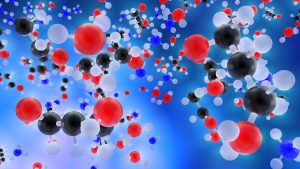
Although the development of ever more powerful instruments has allowed us to explore the universe a little deeper, our senses are still limited and we still cannot see the world of the infinitely small. Because of this limitation, scientists who have tackled the subject of the constitution of matter have had to imagine what matter might be like inside it. In this exercise, several explanatory models have been proposed, which are representations of reality, but not reality itself. In other words, we must not make the mistake of confusing the map with the territory.
The world around us is composed of very diverse materials, some living, some inanimate. Matter frequently changes from one chemical form to another. In their attempts to explain these observations, philosophers since the most ancient times have speculated about the nature of the fundamental material of which the world is made. Atoms.
Articles on the properties of matter
- The Atom: Basic Concepts
- Atomic Models
- Dalton’s Atomic Theory
- James Chadwick: The Neutron
- The Discovery of Positive Particles
- The Discovery of Electrons
- Ernest Rutherford’s Experiment: The Proton and the Nucleus
- What is the Atomic Number (Z)?
- What is the Mass Number (A)?
- What are Ions?
- What is an Isobar?
- What is an isotone?